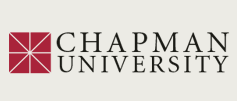Document Type
Article
Publication Date
2-11-2025
Abstract
The rapid evolution of SARS-CoV-2 has led to the emergence of variants with increased immune evasion capabilities, posing significant challenges to antibody-based therapeutics and vaccines. In this study, we conducted a comprehensive structural and energetic analysis of SARS-CoV-2 spike receptor-binding domain (RBD) complexes with neutralizing antibodies from four distinct groups (A–D), including group A LY-CoV016, group B AZD8895 and REGN10933, group C LY-CoV555, and group D antibodies AZD1061, REGN10987, and LY-CoV1404. Using coarse-grained simplified simulation models, rapid energy-based mutational scanning, and rigorous MM-GBSA binding free energy calculations, we elucidated the molecular mechanisms of antibody binding and escape mechanisms, identified key binding hotspots, and explored the evolutionary strategies employed by the virus to evade neutralization. The residue-based decomposition analysis revealed energetic mechanisms and thermodynamic factors underlying the effect of mutations on antibody binding. The results demonstrate excellent qualitative agreement between the predicted binding hotspots and the latest experiments on antibody escape. These findings provide valuable insights into the molecular determinants of antibody binding and viral escape, highlighting the importance of targeting conserved epitopes and leveraging combination therapies to mitigate the risk of immune evasion.
Recommended Citation
Alshahrani, M.; Parikh, V.; Foley, B.; Raisinghani, N.; Verkhivker, G. Mutational Scanning and Binding Free Energy Computations of the SARS-CoV-2 Spike Complexes with Distinct Groups of Neutralizing Antibodies: Energetic Drivers of Convergent Evolution of Binding Affinity and Immune Escape Hotspots. Int. J. Mol. Sci. 2025, 26, 1507. https://doi.org/10.3390/ijms26041507
Peer Reviewed
1
Copyright
The authors
Creative Commons License

This work is licensed under a Creative Commons Attribution 4.0 License.
Included in
COVID-19 Commons, Epidemiology Commons, Medicinal and Pharmaceutical Chemistry Commons, Medicinal-Pharmaceutical Chemistry Commons, Other Pharmacy and Pharmaceutical Sciences Commons, Therapeutics Commons, Virus Diseases Commons


Comments
This article was originally published in International Journal of Molecular Sciences, volume 26, issue 4, in 2025. https://doi.org/10.3390/ijms26041507
This scholarship is part of the Chapman University COVID-19 Archives.